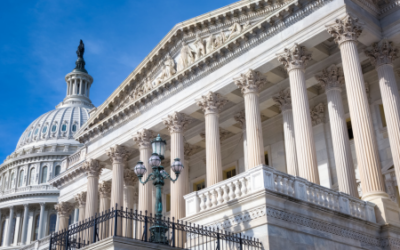Local contractors throughout the U.S. like to be able to anticipate upcoming opportunities. Not all, however, know how to uncover that type of information. Our researchers analyze lots of public documents so identifying upcoming opportunities is common for them. Here’s a bit of advice about how to do it, as well as some interesting opportunities – most of which have not yet been announced.
The research team has a couple of favorite information sources. One way to uncover lots of upcoming government opportunities is to simply take a look at any public organization’s Capital Improvement Plan (CIP). This is typically a multi-year budgeted planning document that describes high-priority projects. Another valuable source of information is a city, county, university, hospital district or school district operating budget. Budgets are totally different from CIPs but when both are analyzed together, it’s possible to get a valuable glimpse of projects that are currently on the drawing boards.

The city of Raleigh, N.C., recently finalized a 2018 Capital Improvement Plan that documents projects valued at about $335.4 million. The largest project is a new $165.2 million Civic Campus, which will consolidate city services and staff in one location.The project design phase is scheduled to begin shortly after the master plan is approved over the next couple of months. Technology projects will make up about $560,000 of the total that is planned. Roadwork projects will be funded by a $206.7 million transportation bond that voters may approve in October.
And, in Knoxville, Tenn., a 2018 CIP budget describes a number of projects that will be initiated over the next year. One construction project, estimated at $7.5 million, will add two additional levels to the State Street parking garage. Another project is a $17.6 million LED streetlight conversion project, which is anticipated to reduce street lighting costs by half.
The Capital Plan for the city of Boston, Mass., identifies 231 new and continuing projects and proposes $256.5 million in new bond authorization as well as a $45.4 million appropriation. The city’s five-year Capital Budget reflects a major commitment to the public library system.
A $190 million CIP for the city of Richmond, Va., indicates that the city will spend $74.3 million in 2018. The largest spending category is transportation infrastructure with major projects focused on the Broad Street/I-95 Interchange, bridge improvements, paving and streetlights. The city also plans to initiate a $1.5 million project to construct dedicated bike infrastructure such as buffered and barrier-separated bike lanes. There are plans to invest $500,000 in an LED streetlight conversion that will increase to a total of $4.4 million over the next five years.
The main focus for the city of New Orleans’ $691 million Capital Improvement Plan is the continuation of damage repair from various hurricanes and tropical storms. Public facilities will be a major focus with plans to construct a New Orleans Police Department District Station and a conversion of the Lafitte Greenway brake tag station to an outdoor pavilion. Nearly $1.4 billion is allocated to the Federal Emergency Management Agency-funded Roads Recovery Program over the next four years with spending of $370 million in 2018.
In Long Beach, Calif., the city’s 2018 CIP totals more than $550 million and focuses on oil and gas and harbor projects. There are plans for major spending on public facilities, including fire station modernization and convention center upgrades.
Officials in Cincinnati, Ohio, hope to spend more than $500 million on projects that will include an $8.6 million sanitary sewer overflow storage and treatment facility. And it appears that about $1.4 million will be allocated for technology enhancements such as network infrastructure upgrades, public safety radio equipment and document storage equipment.
The state and local government marketplace is a trillion dollar source of diverse opportunities. It is only projected to get larger in the near future. It is wise not to overlook it – no matter what type of services or products a company may have to offer.
SPI’s government market research shortens sales cycles and allows your sales team to focus on what they do best…selling. Learn more about their capabilities by contacting them today.






